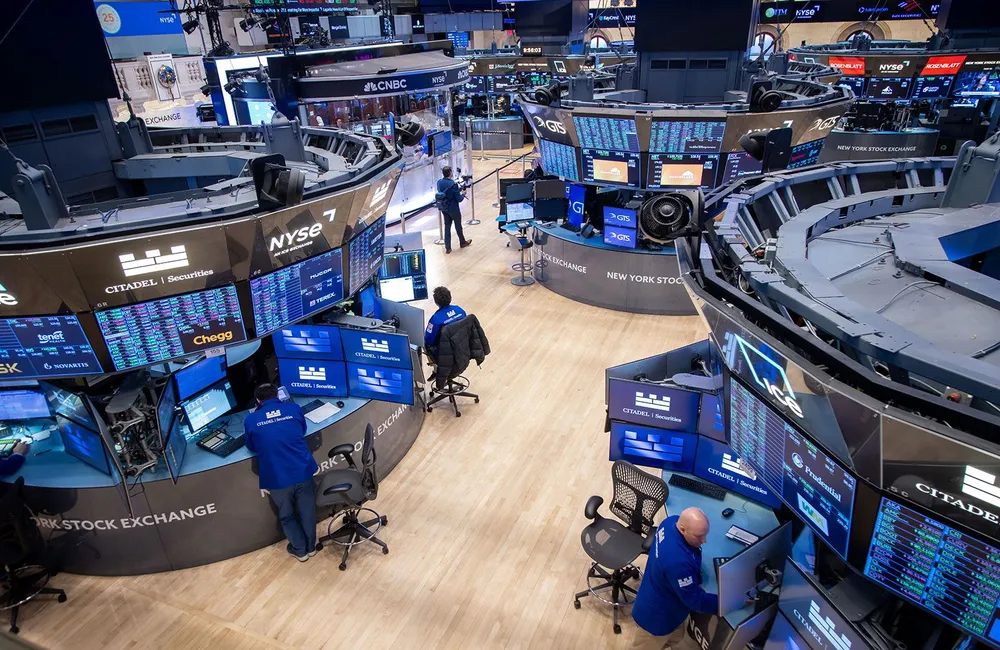The most recent US inflation report might not qualify as good news, but at least it’s a sign that things might be getting better.
The Consumer Price Index increased 0.3 percent in April, the Labor Department said. That was about in line with economists’ predictions and down sharply from the 1.2 percent increase in March. At the same time, annual inflation dipped to 8.3% in April from 8.5% in March.
These signs of improvement in April were offset somewhat by a larger-than-expected increase in the so-called core CPI, omitting notoriously volatile components like food and energy prices. Without those two categories, CPI increased a hotter-than-expected 0.6%.
“Inflation declined in April, but this won't change the Fed's rate-hiking plan, since we are still quite a ways from being confident that inflation has normalized," said Preston Caldwell, chief U.S. economist.
Why is inflation so high?
The month-over-month climb in CPI was led by shelter, food, airline fares and new-vehicle prices. The food index increased 0.9% for a 17th straight monthly gain, while the food-at-home index gained 1%. The energy index fell for the month of April under the weight of a gasoline decline of 6.1%, overcoming increases in the price of natural gas and electricity. At the same time, prices for apparel, communication and used cars and trucks all fell in April compared with March.
The 18.6% jump in airline fares in April was the biggest one-month increase in the history of the index, which goes back to 1963.
“Vehicle prices, one of the biggest drivers of the surge in core prices over the past year, ticked higher in April,” Caldwell notes. “Airfares surged 19%, adding roughly 0.1% to the month-on-month increase, reflecting higher demand and a lagged pass-through of elevated jet fuel prices.”
Though the 0.5% lean in shelter prices fed into a 0.6% increase in core CPI, “other analysts describe shelter very much if not exaggeratedly” in the context of rate of inflation today by ignoring shelter’s hot run of high inflation in the pre-pandemic years, when inflation across the economy was not a problem,” Caldwell says.
“The elevated inflation rate over the past year has much more to do with these sectors like cars, a rapid price blitz in just the last year or so, where the prices were slumbering before the pandemic.”
Inflation rate as of today?
And while month-to-month moves grew more muted in April, annual inflation remained on pace to rise sharply from a year earlier.
“The year-over-inflation rate is going to definitely slow down in the coming months because we’ll be compared against a higher-price base as prices were rising in fast succession throughout 2021,” Caldwell says. “And so we will keep looking at that month-over-month growth rate to see if inflationary pressures are actually easing.”
Now, this is a hot economy, and inflation readings are starting to show signs of peaking, and an important metric of expectations is starting to ease.
One of the most closely monitored gauges of inflation expectations derives from the Treasury Inflation-Protected Securities market, or TIPS. This reading, called the breakeven rate, comes from tracking the difference between the five-year nominal Treasury yield and the five-year TIPS yield. The breakeven rate is what the market expects inflation will be in five years.
That rate is now 2.92%, the lowest since before Russia invaded Ukraine, triggering a jump in inflation expectations from a jump in oil and other commodity prices.
While the breakeven rate does have some reassuring aspects, Caldwell says much of it is a reflection of “the mechanics of how oil prices go in to breakevens” he says. “Once higher oil prices work themselves into the CPI, TIPS principal adjusts and breakevens are a purely forward indication.
“But the five-year, five-year breakeven an effective forecast of inflation six to 10 years out that has also slipped somewhat in recent weeks, which suggests the markets are taking the Fed’s determination to make inflation sit down and shut up more seriously,” Caldwell says.
At the policy-setting Federal Open Market Committee’s June meeting, bond markets are anticipating this fight against inflation to persist. The Fed lifted the federal-funds rate by a half point earlier this month, after a quarter-point hike in March.
Futures prices imply the central bank will elevate the federal-funds price by 0.5 share factors in June. That comes after comments from Fed Chair Jerome Powell that the most likely path ahead for the central bank at the June and July meetings will be more half-point tightenings of policy.





















